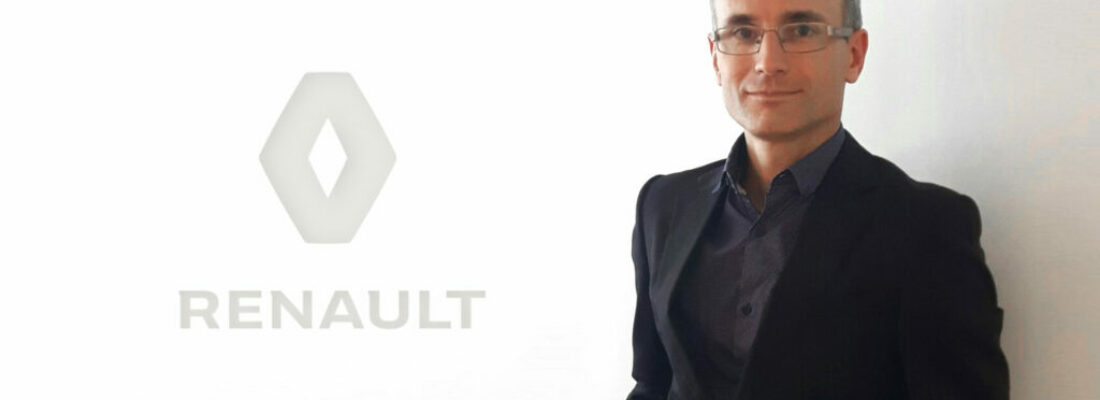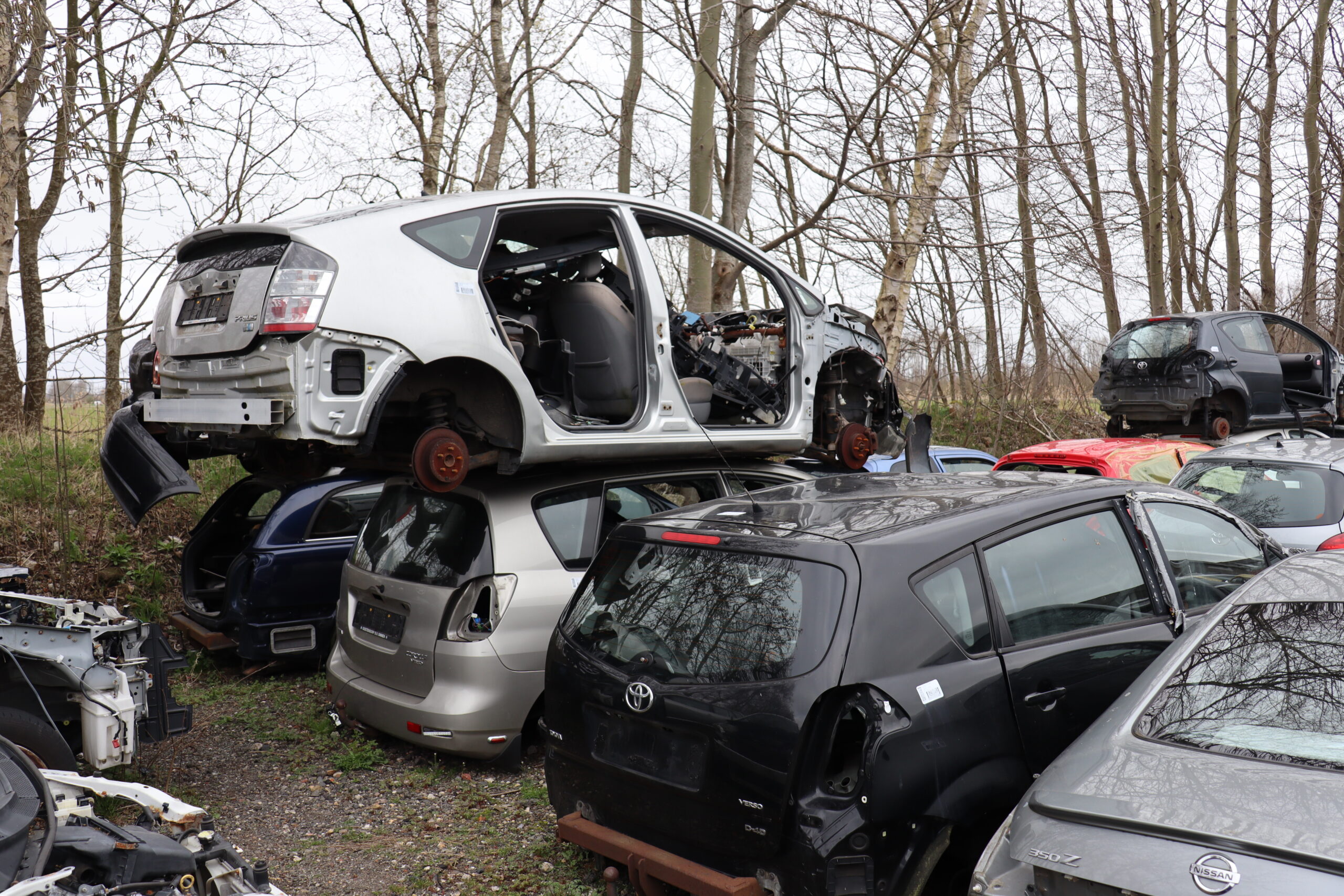Is there a war looming over reusable synthetics? Where do we find a recycling business case for major car manufacturers? And are we about to see the launch of the 100% circular car? This were the questions we asked Jean-Denis Curt, the top man in charge of circular production at Groupe Renault.
Jean-Denis Curt
Jean-Denis Curt has been working with Groupe Renault for 17 years. He worked for many years in production, environment, safety and energy efficiently. In 2014 he became responsible for strategy and stakeholders relations at Groupe Renault. A year ago he became the number one in circular production at the Groupe. Groupe Renault operates in 134 countries and manufactures models such as Renault, Dacia, Alpine and Lada, and is part of the Renault Nissan Mitsubishi Alliance.
What percentage of a new Renault is made of recycled materials?“For European models it’s about 33 percent, but the newest Mégane model is already up to 36 percent. These numbers put Renault at the top of its category. We are market leaders in the use of recyclable synthetics.”
How much of the plastic in a car is recycled?“A car contains 150 to 250 kilo of synthetic materials. At Renault we recycle around 20 percent of this. The absolute leader is the Espace. This model contains a total of 54 kilos of recycled synthetics. We are very pleased with these results, but we know we must do much better. At the moment we don’t use any recycled materials in visible parts. But that will change next year. We will be using recycled materials in the trunk and are studying the possibility of using it in other components, for example for the back of the seats. It is a big step forward, but there are still challenges. Suppliers are continually creating new, sometimes complex materials that are not always recyclable. One example is synthetically reinforced carbon-fibre.”
Do these new materials get in the way of the circular car?“To a certain extent they do. We always have to weigh the pros and cons: some new materials are difficult to recycle but offer a huge weight advantage and lower emissions. To prevent us from having to chose between recycled materials or less weight, we are developing new lightweight recycled materials, together with our suppliers and recycle partners.”
Does Renault have specific goals for the use of recycled materials?“The first goal is to use 50% more recycled synthetics by 2022, compared to 2013. We are talking about 64,000 tons of materials, compared to 43,000 tons in 2013. To achieve this we have to source the international market, especially India, China, South America and Turkey, in search of recyclable synthetics. Right now that’s not an easy task. But we are doing our very best and stimulating producers wherever we can.”
Is there a war going on between car manufacturers over recyclable materials?“I wouldn’t say a war, but there is a growing market. Until recently, recycling wasn’t a big priority for most car manufacturers. It’s a way to reduce costs. We have made it a priority to use recycled materials for quite some time.”
You just mentioned China. Isn’t this a golden opportunity for that country’s relatively young car industry to start working with recycled materials?“In China, recycled materials still have a bad image among consumers. To them it means second-hand. We have been producing cars in China for about two years and are still putting a lot of effort into our search for recycled materials. But once the Chinese figure out that they could play a global key role in recycling things will probably change fast. China is one of our priorities in our plan to achieve our goals for 2022.”
What car materials can be recycled?“As I mentioned earlier, lightweight materials are still difficult to recycle. For metals we are working on developing ‘closed loops’ – closed systems – in our own Indra network. We are able to reuse parts of the mufflers, we remove platinum from the converters and copper from the wiring. We collect it all and sell it to our recycling branch Gaïa. We are trying to implement closed loops at various levels. Between our manufacturers, suppliers, R&D centres and more.”
What is the Renault business case in terms of circular cars?“Under Renault Environment, we have Gaïa [note: 100% Renault owned for ‘end of life’ waste], Indra [note: collect ‘end of life’ vehicles], and Boone Comenor [note: metal waste]. The latter two are joint ventures. They generate 500 million euro a year in revenue and are profitable operations. And they are growing fast.
“Refurbished parts are rarely used in new cars”
We invest greatly in closed systems. The goal is to integrate circularity in the company’s core business. Integration with our suppliers and manufacturing plants is very important. We also invest a lot in our “second life” activities, from parts to batteries. We are focused on recycling and re-manufacturing, as well as reusing parts and mechanical components.”
The recycling company Indra is a joint venture of Renault and Suez. What are the plans?“Indra has two locations for dismantling used vehicles. These are test sites to improve the dismantling techniques. In France, we are also a leader in “second life” components. This is knowledge we can share.”
What’s better: a car with parts that last the same amount of time and that after a certain period, say 7 years, ‘falls apart’, or a car with components that last long enough so they can be reused in new cars?”The first option doesn’t fly. We design cars to last as long as possible. The commercial life span of a car may be around 7 years, but the actual life span is much longer, an average of 18 years right now, but growing longer. This is all about quality and life span.”
Does Renault believe in using replaceable components to refurbish cars into new cars and giving them a second chance?“You could refurbish the drive, but then you may end up with some 10-year old drive systems. These are no longer compliant with our fast changing laws and regulations. So you cannot reuse a refurbished drive in a new car.
“In China, recycled materials still have a bad image among consumers. It basically means second-hand”
Other refurbished parts are also not often used in new cars. A second life is possible via our after sales network, which we already use. We have a refurbishing plant south of Paris. Here we refurbish parts so they are as good as new and resell them through our after sales network. At a reduced price, of course.”
Electric cars are taking off. How does Renault recycle batteries?We are researching the possibility of reusing battery components, such as the cobalt and nickel, to produce new batteries. Old batteries from electric cars are also reused in the fast growing energy storage market. After ten years of use, batteries lose around 25% of their storage capacity, but are still perfectly fine for storing energy.”
Does the growth of car sharing and new taxi services influence how car manufacturers build their cars?”Car manufacturers are also making the switch to MAAS: Mobility As A Service. Renault is also becoming a mobility supplier with car sharing and driverless taxis. This is all about mobility at the lowest cost. This will certainly influence the design. As the car is parked outside of their home, private owners currently value design and look. However, MAAS customers will put a greater emphasis on comfort and low costs. Our reused materials must be very study, easy to clean and easy to maintain.”
Do you take recycling into consideration when designing a car?“Absolutely. We are legally obligated to recycle 85% of materials and reuse 10% of energy. Indra provides us with feedback on how to improve this so we can develop parts in the design stage that are more easily recycled. This remains an ongoing challenge.”
Will we live to see the 100% circular car?“Around 2030 we will have made great strides in refurbishing cars and using recycled materials in new cars. But a 100% circular car? That is still a long way into the future.”




